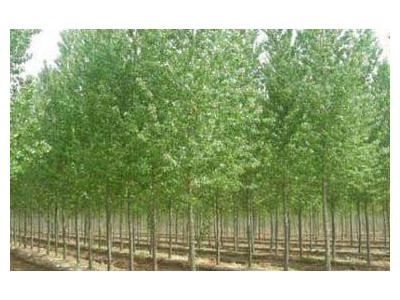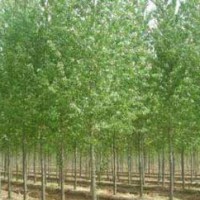Fast growing white wax
Fast-growing ash, dicotyledon class, ash tree genus of Oleaceae. It is a deciduous tree with a height of 15m and a diameter at breast height of 40cm. From the north-central part of Northeast China, through the Yellow River Basin, the Yangtze River Basin, south to Guangdong and Guangxi, southeast to Fujian, and west to Gansu. Its beautiful tree shape and strong stress resistance make it one of the important afforestation tree species and landscaping tree species in saline-alkali land.
Morphological characteristics:
Fast-growing white wax is an excellent deciduous tree species. The adult tree crown is oval, the trunk and main branches are yellow-brown, and the branchlets of 1 to 2 years are smooth and hairless. Odd-pinnate compound leaves, 5-9 opposite leaflets, 7 under normal circumstances. The leaves are ovoid or ovate-lanceolate, with a length of 3-10cm, with lateral or terminal cones on the branches of the year. The inflorescence is relatively large and loose, and the inflorescence is drooping. It blooms in spring and summer, and the flowering period is 3 to May; the fruit matures in October.
Reproduction method:
1. Seed treatment. Fast-growing white wax grafting rootstocks generally choose fluff white wax. The dormancy period of the pewter seeds is longer, so the autumn sowing can be done before the soil is frozen at the end of November. Spring sowing is mostly used in production, and the seeds need to be processed.
2. Selection of nursery sites. The nursery land should choose loam plots with deep soil, rich nutrients, high organic matter content, and good drainage and irrigation conditions.
3. Soil treatment. Before planting, it is necessary to apply sufficient base fertilizer in combination with soil preparation. The amount of fertilizer per hectare is generally 60 thousand to 72,000 kg of decomposed organic fertilizer and 375 kg of diammonium phosphate. At the same time, 30-45 kg of phoxim particles are applied to kill underground pests. The soil preparation should be fine, broken, and leveled to facilitate the management of planting and later water and fertilizer.
4. Sowing seeds. White wax seeds can be sown in spring and autumn, but considering factors such as soil moisture and seedling uniformity, spring sowing is generally selected. In North China, it is generally appropriate to sow from late March to early April. Ditching and drilling should be adopted for sowing, with a ditch depth of 2-3cm and a cover soil thickness of about 2cm. In saline-alkali areas, the method of mulching can be used for sowing to ensure soil moisture and effectively reduce soil return to salt. After the seedlings emerge, they should be ventilated and removed in time to prevent seedlings from being burned.
5. Tending management of rootstock seedlings. Seedlings can emerge after 10 days of sowing. Generally, seedlings emerge at 20 days. Strengthening the management of seedlings is a key link in cultivating strong rootstocks.
Growth environment:
快速增长的白色蜡喜欢潮湿,我s mostly distributed beside caves and streams and grows fast. Fast-growing pewter has high ornamental value, so in the application of landscaping, fast-growing pewter is also very popular. Fast-growing white wax is an excellent tree species for wind and sand fixation, urban greening and beautification, and ecological construction. Its branches and leaves are luxuriant, the root system is developed, and it grows quickly. It is resistant to drought, waterlogging, cold, salt and alkali, wind, disease and insect pests, and has strong adaptability and dry shape. Straight, beautiful tree shape, normal growth on soil with less than 0.3% salt content.










